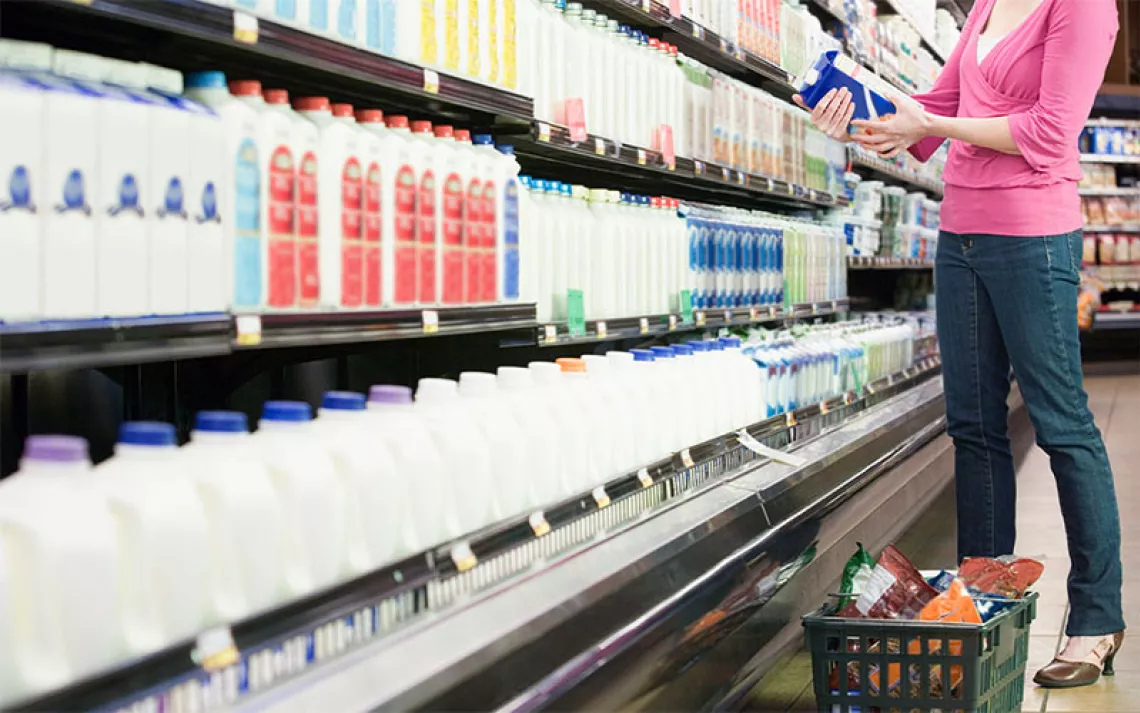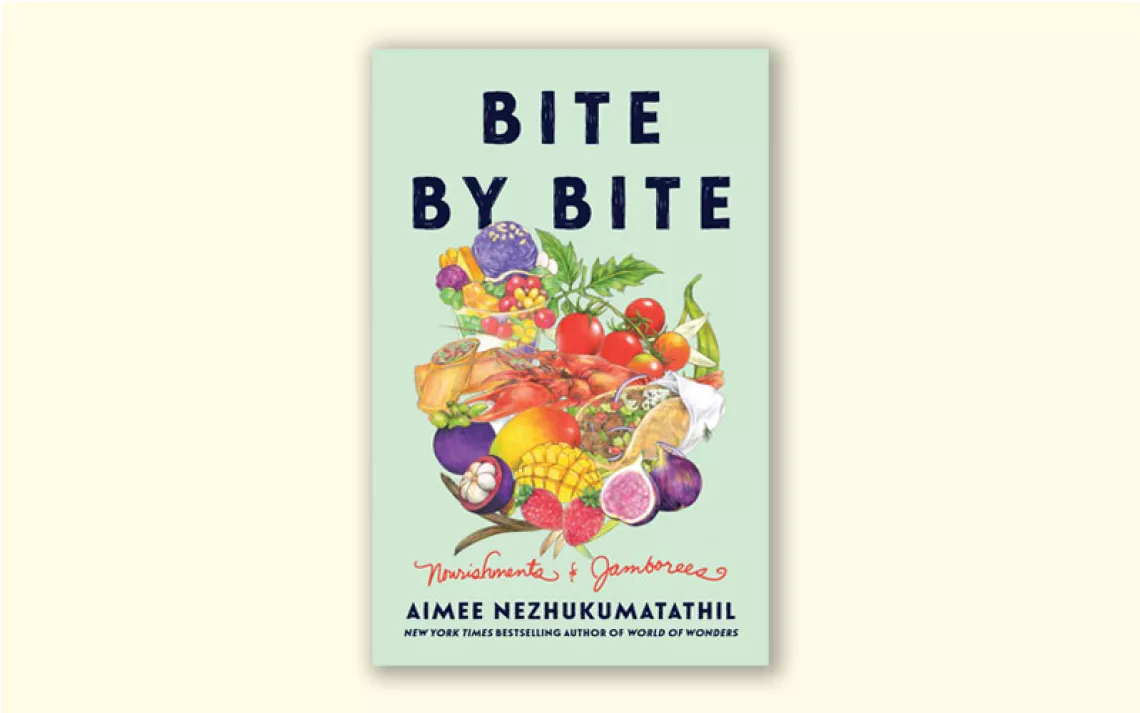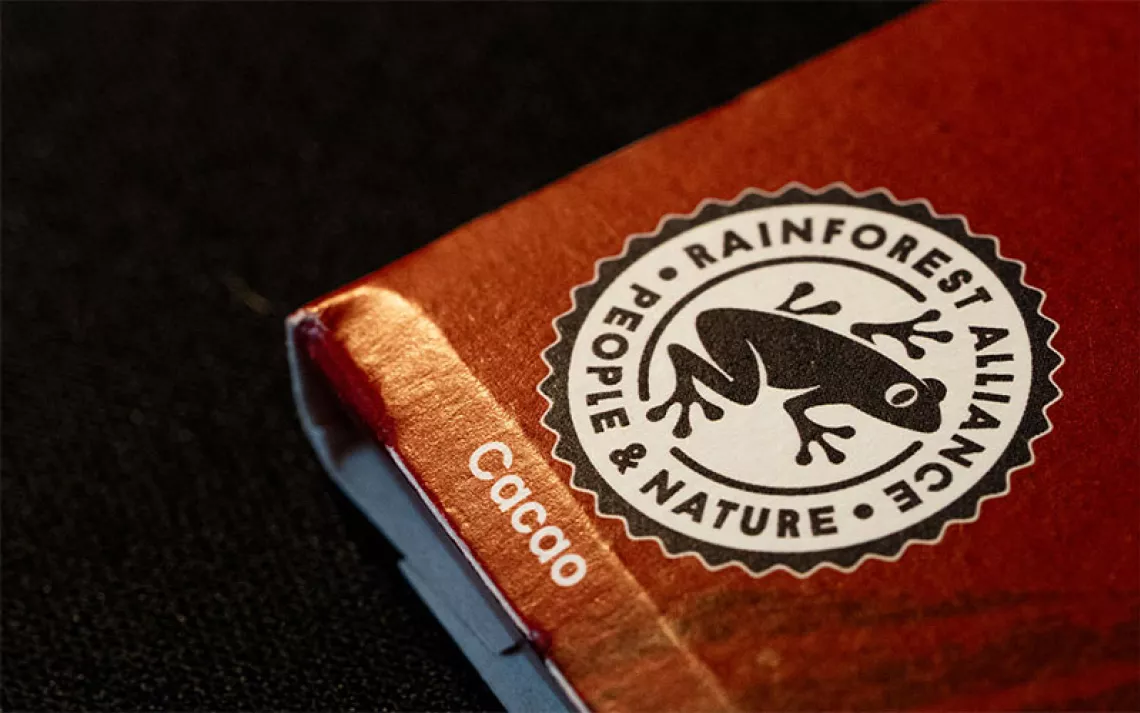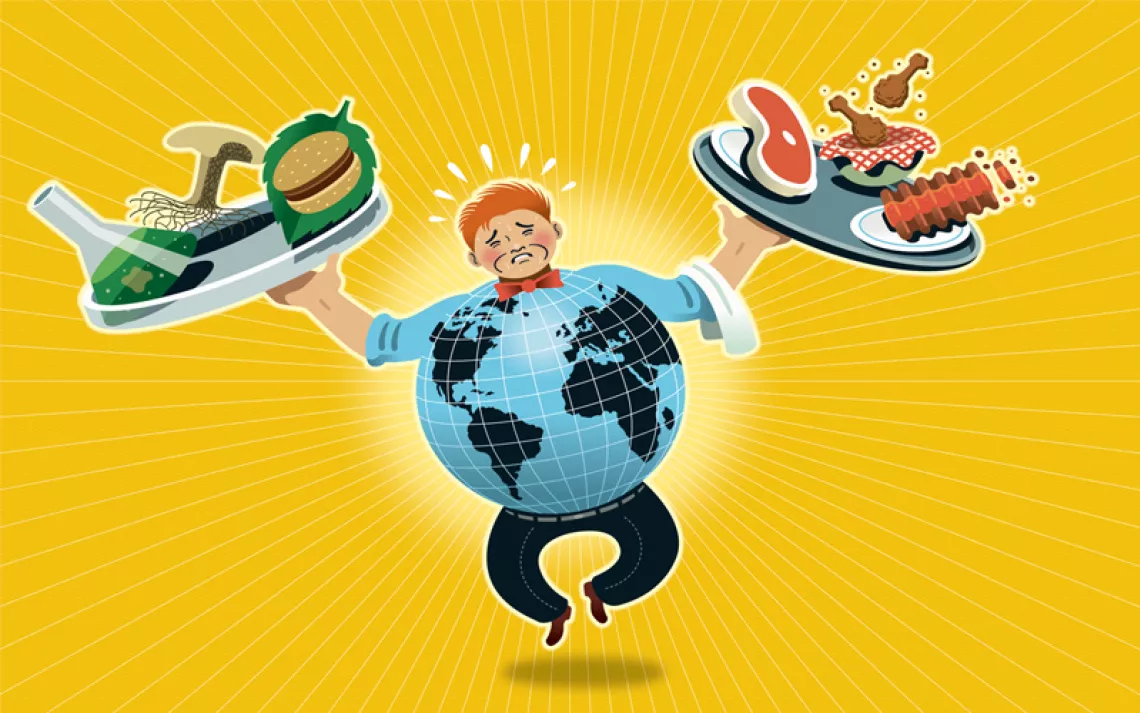Apples, Pears, and Pesticides
A parent’s guide to kid-friendly foods

I wish I had known three weeks ago what I know today. I was sitting in my sister-in-law's kitchen, watching her cut up fruit for my one-year-old niece. Grapes, peach and melon slices--my niece shoved them all appreciatively into her mouth. Neither her mom nor I realized she could have been eating traces of poison, too. Pesticides have become a part of growing up. “We live in a chemical soup, and children are more susceptible than adults,” says Dr. Eric Dover, president of the Oregon chapter of Physicians for Social Responsibility. “Their immune systems, their endocrine systems, their muscles, and their bones are still immature.” A child’s liver or kidneys, for example, are not able to detoxify certain chemicals that an adult body can. And since children experience frequent growth spurts, they need to eat more, drink more, and breathe more, proportionately, than adults do. A child can eat up to four times more fresh fruit per pound of body weight than an adult.
It wasn’t until 1996 that the federal government finally recognized these vital differences and passed the Food Quality Protection Act, which requires the EPA to reassess all pesticide chemicals--nearly 500 of them--that come in contact with food, in order to test their relative safety for children. The act requires that if new data deem it necessary, the agency will set stricter tolerance levels for the various compounds. Five years later, the EPA has only reviewed about 100 chemicals. The rest of the assessments aren’t scheduled to be completed until 2006. The agency has decided that the safety limits for more than half of the 100 tested chemicals can be left unchanged, while those it did restrict aren’t necessarily out of circulation.
Take chlorpyrifos, for example. Sold under the trade name Dursban, the chemical is the most widely used household pesticide in the United States. It’s also sprayed on 40 different agricultural crops. Chlorpyrifos is an organophosphate (OP), a family of particularly dangerous neurotoxins that play havoc with children’s developing nervous systems. Last summer, in accordance with the new pesticide safety standards for children, the EPA announced that Dursban will be phased out of residential use by 2002. But while the agency eliminated the bug spray in homes, it only reduced or eliminated its use on three crops: grapes, tomatoes, and apples. That means chlorpyrifos can still show up on 37 other crops, including the peaches that my niece enjoys eating.
“The EPA is taking baby steps,” sighs Becky Riley, of the Northwest Coalition for Alternatives to Pesticides. Even though the majority of OPs can be classed similarly--meaning they’re chemicals that do the same kind of physical damage--the EPA is mostly assessing them one by one. Riley adds that although the agency will eventually have to evaluate the cumulative effects of OPs as a group, current policies still allow chemicals like dimethoate or acephate to be sprayed on apples, for example, even though the EPA has severely restricted the use of a similar organophosphate, methyl parathion. While methyl parathion is more acutely toxic than the other two OPs, over time a child’s chronic exposure to dimethoate and acephate can be just as dangerous.
OPs are popular with farmers because they’re cheap and can be used on more than one crop. Sixty million pounds of these pesticides are applied annually to 60 million acres of U.S. farmland, so traces of OPs are regularly found on grapes, oranges, strawberries, and apples, to name just a few. Many kids eat more than one of these foods a day, but even one serving can expose a child to excessive levels of pesticides. “The cumulative toxicity of the OPs found in apples and in peaches is such that a child who eats three-fourths of an apple, or a whole peach, has roughly a one-in-four chance of exceeding the [safe daily intake] for OPs,” writes Consumers Union, in a 1998 report examining the 40 worst pesticides.
But you don’t have to wait for the EPA to finish doing its job to protect your kids. There are several things you can do to make sure the food on your table is safe. If you have to buy your produce (rather than grow it yourself) buying organic is the only way to ensure that your children’s exposure to toxics is greatly reduced. In December of last year, the U.S. Department of Agriculture came out with a federal standard for organically grown food that USDA secretary Dan Glickman called “the strongest and most comprehensive organic standard in the world.” Under the new rules, anything labeled “organic” must now consist of at least 95 percent organically produced ingredients. But many parents, my brother and sister-in-law included, can’t afford to buy organic foods, which are sometimes twice as expensive as conventional produce. In that case, knowing a few rules of thumb can help:
Some foods are worse than others.
Consumers Union and the Environmental Working Group have both done extensive studies on which foods have the highest pesticide residues (see sidebar). Peaches, for example, make everyone’s top-five list. So do apples: More than 35 different pesticides can be used on apples, which have numerous pests, while less than a dozen are used on broccoli. Produce that is processed, canned, or turned into juice also has much lower pesticide residues since it’s most often been peeled, washed, and heated. But while processed fruits and veggies have less residue, many of them have had a good deal of their vitamin and mineral content processed out, too.
Wash and peel your food.
Washing (with a little dish soap) and peeling your food can remove some toxic residues. But some pesticides, such as dieldrin or aldicarb, can permeate the entire body of the fruit or vegetable. Aldicarb is used primarily on potatoes, which fully absorb this toxic substance. Dieldrin was banned in 1974, but has lingered in the soil for decades, still contaminating the flesh of vegetables like cucumbers, squash, and melons grown in tainted fields.
Eat a variety.
Don’t eliminate fruits or vegetables from your children’s diet just to protect them from pesticides. Instead, feed them a wide variety of foods to lower their risk of being repeatedly exposed to the same toxic substances. Not all chemicals are used in the same amounts on different foods, so by making sure that your child eats broccoli as well as strawberries, you can mitigate some of her levels of exposure.
Grow your own.
It’s easier than you think. All you need is a small plot of soil in your yard or community garden and you can have easy-to-grow vegetables like lettuce and potatoes. You can even make your own natural insect repellent with a little liquid soap, powdered cayenne pepper, onion, garlic, and water mixed in a spray bottle. And, unlike commercial growers, you can raise your produce for taste, not shelf life.
You Are What You Eat
According to a 1999 Consumers Union report and numerous studies by the Environmental Working Group, these are the five best and worst fruits and vegetables in terms of pesticide residues.
Lowest Pesticide Residues:
- broccoli
- bananas
- peas (canned or frozen)
- sweet potatoes
- corn (canned or frozen)
Highest Pesticide Residues:
- peaches
- winter squash
- apples
- green beans
- pears
 The Magazine of The Sierra Club
The Magazine of The Sierra Club



